Dashboard lights are an essential component of any vehicle, providing drivers with critical information about their car’s performance and status. However, like any other electrical component, they can malfunction, and in some cases, the solution may be as simple as replacing a blown fuse. In this article, we’ll take a closer look at the dashboard lights and the fuses that power them, helping you identify which fuse is responsible for keeping your dashboard lights illuminated.
Location of the Fuse
The fuse for the dashboard lights is a critical component, and its location can vary depending on the make and model of your vehicle. Typically, you’ll find it housed within the main fuse box. This box is strategically placed for accessibility, but its exact location can differ. [1]
- Glove Compartment: In some cars, the main fuse box containing the dashboard light fuse is situated inside the glove compartment. To access it, open the glove compartment and look for a cover or panel. It might be secured with clips or screws, so be prepared with the necessary tools.
- Under the Dashboard (Driver’s Side): Another common location is beneath the dashboard on the driver’s side of the vehicle. You might need to crouch down and inspect the area near the steering column or under the dashboard. Again, check for a cover or panel that protects the fuse box.
- Under the Hood (Near the Engine): Alternatively, the main fuse box, including the dashboard light fuse, may be located under the hood, close to the engine. This is common in many vehicles, especially larger ones or those with front-engine configurations. Look for a box with a removable cover, often labeled with fuse amperages and functions.
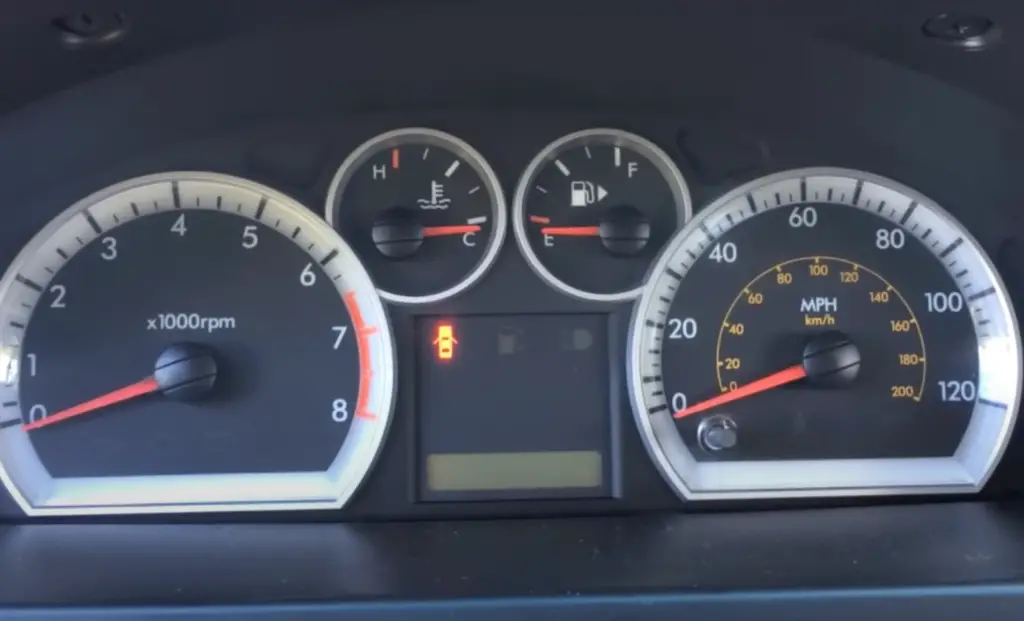
If you’re still unable to locate the fuse box or identify the dashboard light fuse, don’t hesitate to seek assistance. Some vehicles have secondary fuse boxes, so exploring the manual or contacting the manufacturer’s customer support can be helpful.
Type of Fuse
Selecting the right type of fuse for your dashboard lights is crucial for ensuring the proper functioning and safety of your vehicle’s electrical system. The specific type of fuse required can vary based on the make, model, and year of your vehicle.
In the majority of vehicles, the dashboard lights are safeguarded by either a mini or standard blade-style fuse. These fuses are characterized by their flat, rectangular shape and are designed to fit into corresponding fuse slots within the fuse box.
The amperage rating of the fuse is a critical factor. Most dashboard light fuses are low-amperage, typically ranging from 5 amps to 7 amps. This low rating is intentional and serves to protect the vehicle’s wiring from potential issues such as short circuits and overcurrent situations.

Blade fuses are named for their shape and are commonly used in modern vehicles. They are more user-friendly than older-style glass-tube fuses and are designed to be easily replaced. The blade-style fuse for dashboard lights acts as a protective barrier, interrupting the electrical circuit if an overload occurs. This helps prevent damage to the wiring and electrical components. [2]
When replacing a fuse, ensure you use one with the exact amperage rating recommended by the manufacturer. Using a fuse with a higher or lower amperage can lead to electrical issues and potentially cause damage to the vehicle’s electrical system.
Which Fuse to Check
Identifying the correct fuse is a crucial step in the diagnostic process when troubleshooting issues with your dashboard lights. The speedometer lights, a vital component of your vehicle’s instrument cluster, are typically controlled by a specific fuse labeled as “instrument cluster” or “gauges” in the fuse box.
- Locating the Fuse Box: The first step is to locate the fuse box, which can be situated either under the dashboard on the driver’s side or in the engine compartment. As mentioned earlier, consult your owner’s manual for precise details on the location of the fuse box in your specific make and model.
- Checking the Labeling: Once you’ve accessed the fuse box, carefully examine the labels to find the fuse associated with the instrument cluster or gauges. It might be labeled specifically as “dashboard lights,” “instrument panel,” or “gauges.” If you’re unsure, refer to the manual or the information on the fuse box cover.
- Multiple Fuses for Dashboard Lights: In some vehicles, multiple fuses may be dedicated to various dashboard lights’ components. It’s essential to check all relevant fuses, even if they are not explicitly labeled for the instrument cluster. Look for fuses related to interior lighting, illumination, or similar descriptions.
- Inspecting for a Blown Fuse: A blown fuse can be identified by a break in the metal filament inside. If the filament appears intact, the fuse is likely still functional. If it’s broken or has a charred appearance, it needs to be replaced.
- Fuse Puller and Replacement: Use a fuse puller or a pair of needle-nose pliers to carefully remove the suspect fuse. Refer to your owner’s manual for the correct amperage and type of replacement fuse. Insert the new fuse into the corresponding slot, ensuring it matches the amperage of the original.
- Testing the Lights: After replacing the fuse, turn on the vehicle’s ignition and check if the dashboard lights, including the speedometer lights, are functioning properly. If the issue persists, there may be an underlying electrical problem, and professional assistance may be required.
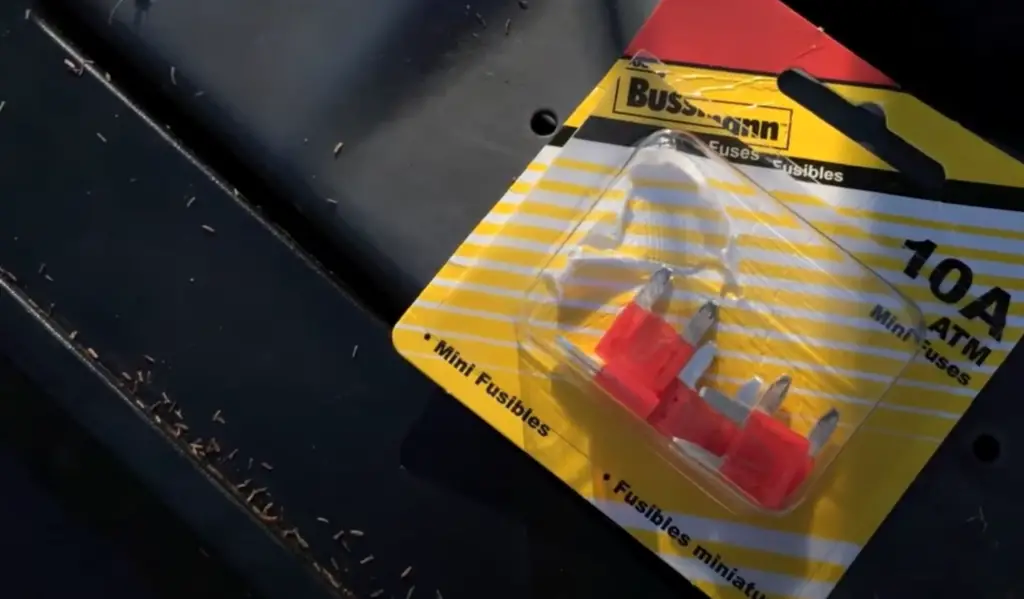
Remember, safety is paramount, so always disconnect the vehicle’s battery before inspecting or replacing fuses to prevent electrical accidents. If you encounter difficulties or if the problem persists, it’s advisable to seek the assistance of a qualified automotive professional.
Signs of a Faulty Dashboard Gauge Fuse
Detecting issues with your vehicle’s dashboard gauge fuse is crucial for maintaining a functional and safe driving experience. [3] Keep an eye out for the following signs that may indicate a broken or blown fuse:
Unresponsive Gauges
If your dashboard gauges suddenly become unresponsive while driving, it could be a clear indicator of a blown or broken fuse. The gauges, including the speedometer, fuel gauge, and temperature gauge, rely on the proper functioning of the associated fuse to display accurate information.
Flickering Lights
A noticeable flickering of lights on your dashboard, followed by their complete outage, often signifies a disruption in the electrical circuit. This flickering indicates that a circuit has been disconnected, pointing to a potential issue with the gauge fuse. It’s essential to address this promptly to avoid further electrical complications.
Unusual Smells
An unexpected electrical burning smell emanating from your dashboard could be a concerning sign. This scent may indicate that the gauge fuse has overheated or suffered damage, compromising its functionality. If you detect such an odor, it’s crucial to investigate promptly and replace the fuse to prevent potential electrical hazards.
Buzzing Sounds
Faulty gauge fuses may produce buzzing sounds originating from the dashboard area. These sounds can occur while driving or when activating certain electronic components in the car. The buzzing indicates an irregular flow of electricity, possibly caused by a damaged fuse. Promptly addressing this issue is essential to prevent further damage to the electrical system.
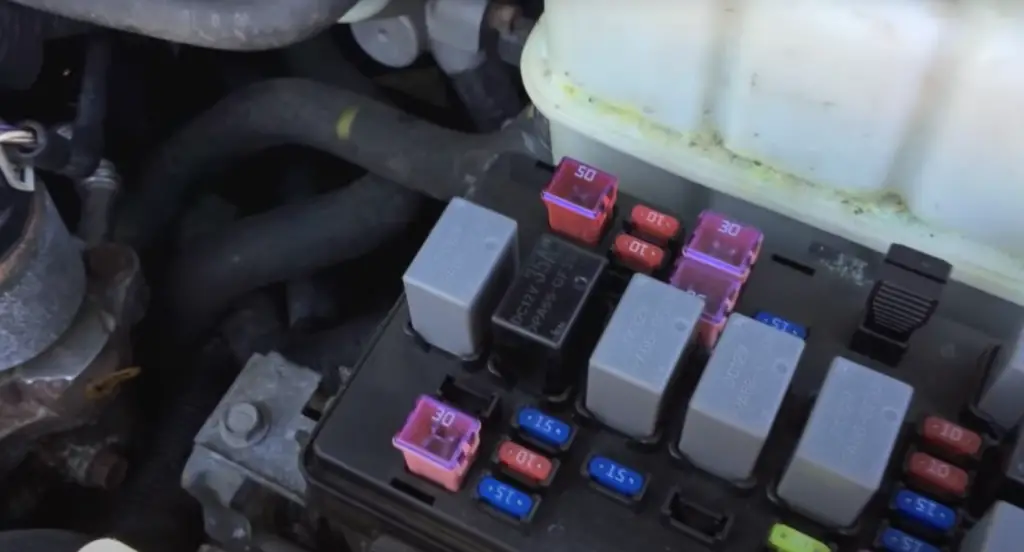
Inconsistent Gauge Readings
A malfunctioning gauge fuse can lead to erratic or inconsistent readings on your dashboard gauges. If you observe sudden fluctuations or inaccuracies in the readings, it’s a strong indication that the fuse may need attention.
If the problem persists or if you’re unsure about the diagnosis, seeking professional assistance from a qualified automotive technician is advisable to ensure a comprehensive and accurate resolution.
Factors Contributing to Dashboard Gauge Fuse Breakdown
Understanding the potential causes of a dashboard gauge fuse breaking down is crucial for maintaining the reliability of your vehicle’s electrical system. Several factors may contribute to the breakdown of the dashboard gauge fuse:
Short Circuits
Short circuits occur when two wires come into contact, leading to an unintended pathway for electrical current. This can result in excessive electricity reaching the fuse, causing it to blow. Regular inspections of the wiring and addressing any exposed or damaged wires can help prevent short circuits.
Improper Dashboard Fuse Replacements
When replacing a dashboard fuse, it is imperative to use the correct type and size. Incorrectly installing a fuse of the wrong specifications can lead to electrical shorts and severe damage to the vehicle’s wiring system. Additionally, over-fusing a circuit by using a higher amperage rating than required poses a risk of significant damage.
Wrong Wiring Connections
Successful fuse replacement requires proper wiring connections. Incorrect connections can disrupt the flow of current, leading to heat buildup, blown fuses, or melted wires and components. Thoroughly double-checking all connections before reassembly is crucial to prevent these issues.
Age and Condition of the Vehicle
The age and condition of the vehicle are important considerations. Older vehicles may have different fuse box configurations, and if not serviced regularly, they may require more frequent fuse replacements. Regular inspections of the fuse box, especially in older vehicles, can help identify and address potential issues.
Corrosion
Corrosion can impact the dashboard light fuse, particularly in areas with high humidity and moisture. Inspecting the fuse box for signs of corrosion and replacing any corroded wiring or connections is essential for ensuring the proper functioning of the electrical system.
Electrical Overload
An electrical overload can occur when too much current runs through the lines, exceeding the fuse box’s capacity. If this happens, installing a larger fuse might seem like a quick fix, but it can lead to further problems. Consulting a professional is recommended to address electrical overload issues effectively.
Regular Maintenance
Regularly inspecting the fuse box and promptly replacing any faulty or damaged fuses is a key preventive measure. This proactive approach helps identify potential issues before they escalate, ensuring the continued reliability of the dashboard lights and other electrical components.
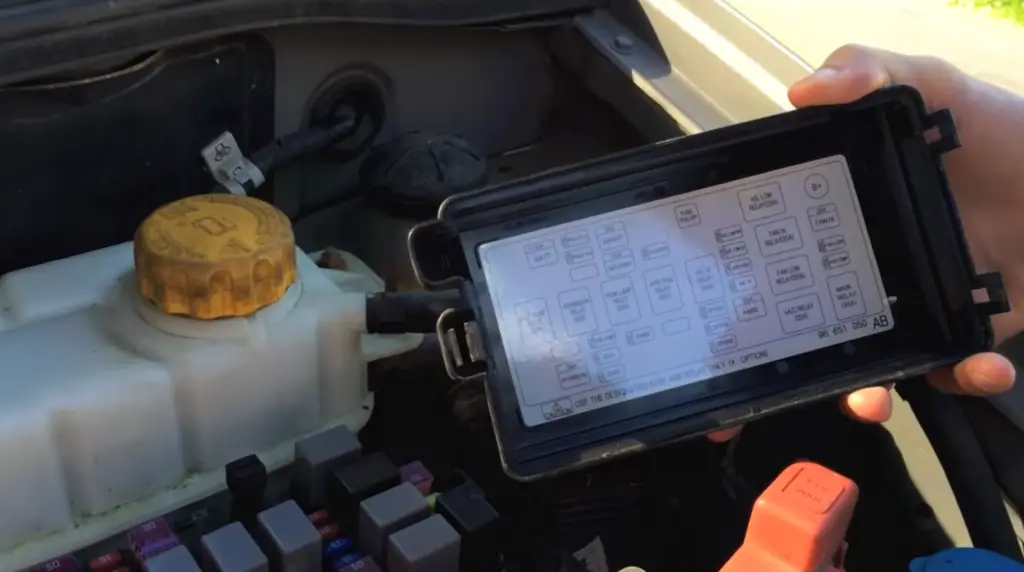
Always consult a professional for repairs and maintenance to ensure the safety and integrity of your vehicle’s electrical system. Knowing which fuse is dedicated to the dashboard lights empowers you to address issues promptly, saving time and money in the long run.
Choosing the Right Fuse for Your Dashboard Lights
Locating the correct fuse for your car’s dashboard lights may seem like a daunting task, given the variety of fuses typically used for different components. Understanding which fuse is designed for your dashboard lights is crucial for the swift identification and resolution of any issues that may arise. [4]
Dashboard lights in vehicles often utilize a range of different fuses, each serving a specific purpose. To effectively address any problems with your dashboard lights, knowing which fuse corresponds to each component is essential. This knowledge streamlines the troubleshooting process.
The type of fuse required for dashboard lights depends on the make, model, and manufacturing year of your vehicle. Generally, most vehicles utilize either a mini or standard blade-style fuse for their dashboard lighting system. However, some cars may have unique designs and components that require specialty fuses.
To determine the precise type of fuse needed for your car’s dashboard lights, refer to the vehicle’s manual or owner’s handbook. These resources contain comprehensive diagrams illustrating all fuses and relays used in your vehicle, along with information on each component’s specific type of fuse.
Once you’ve consulted the manual and identified the correct type of fuse for your dashboard lights, you can proceed to purchase the replacement fuse from an auto parts store. Ensuring that you use the right type and amperage is crucial for the safe and effective operation of the electrical system.
Many modern cars come equipped with an onboard diagnostic system that can assist in identifying which fuse is causing issues with the dashboard lights. If you suspect a problem with one of the fuses, consulting this system before attempting any DIY repairs is advisable. The onboard diagnostic system can provide valuable insights into potential electrical issues, facilitating a more accurate and efficient resolution.
Knowing which fuse is designated for the dashboard lights in your vehicle empowers you to address electrical issues promptly and accurately. Regular reference to the vehicle’s manual and utilizing the onboard diagnostic system, if available, enhances your ability to maintain the functionality of your dashboard lights and other electrical components. If in doubt or if issues persist, consulting a professional is always a prudent step to ensure the safety and integrity of your vehicle’s electrical system.
Steps to Replace the Dashboard Light Fuse
If you’re experiencing issues with your dashboard lights and suspect a blown fuse, here are step-by-step instructions to help you replace it:
- Turn off the Vehicle: Ensure the vehicle is turned off, and remove the key from the ignition. This step is crucial to ensure your safety and prevent any electrical accidents during the replacement process.
- Locate the Fuse Box: Find the fuse box in your vehicle. The location can vary depending on the make and model, so consult your owner’s manual if you’re unsure. The fuse box is usually located under the dashboard on the driver’s side or in the engine compartment.
- Remove the Fuse Box Lid: Once you’ve located the fuse box, remove the lid. The lid often contains a diagram on its underside, providing information about the location and function of each fuse. Look for a fuse labeled “dash lights” or simply “lights.”
- Identify the Fuse: Use the diagram on the underside of the fuse box lid to locate the fuse corresponding to the dashboard lights. The diagram should help you pinpoint the specific fuse slot that powers the lights.
- Remove the Blown Fuse: Utilize a fuse puller or needle-nose pliers to remove the blown fuse from its slot carefully. Exercise caution to avoid damaging the fuse box or surrounding components.
- Inspect the Blown Fuse: Examine the blown fuse for signs of damage. Check the metal strip or filament inside the fuse for any breaks, and look for blackening on the fuse. If the fuse appears intact, use a multimeter to test its functionality.
- Select a Replacement Fuse: Take the blown fuse to an auto parts store to ensure you select a replacement of the same type and amperage rating. Using the correct specifications is crucial for the safe and effective operation of the electrical system.
- Insert the Replacement Fuse: Press the replacement fuse into the correct fuse slot until it clicks into place. Ensure it fits securely and makes proper contact within the slot.
- Turn the Key to Zero Position: Always turn the key to the zero position on the ignition when removing or replacing fuses. This action cuts power to most fuses in the fuse box, enhancing safety during service.
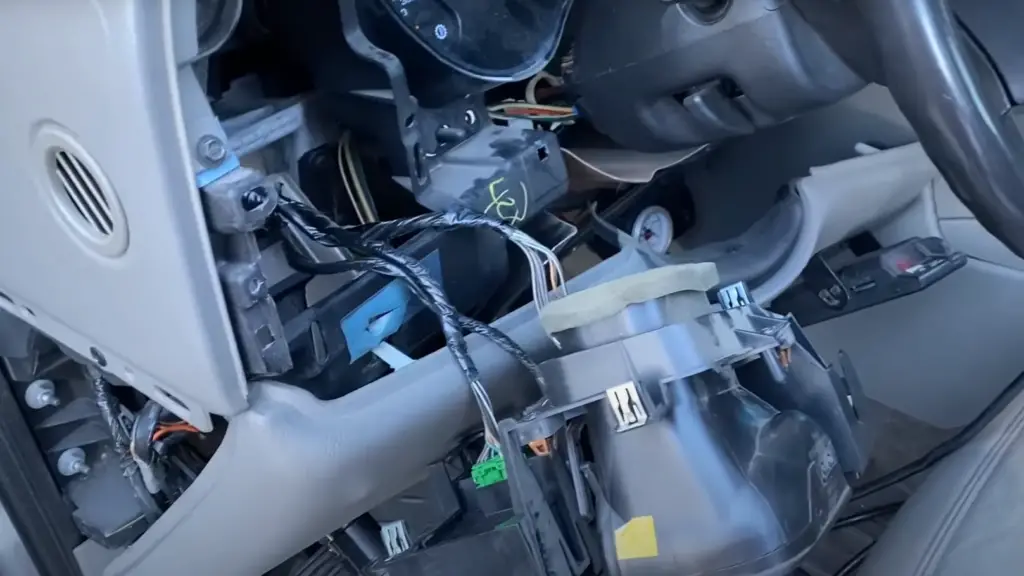
By following these steps, you can confidently replace a blown dashboard light fuse in your vehicle. If issues persist or if you need more clarification about the process, seek professional assistance to ensure the proper functioning of your electrical system.
Types of Dashboard Light Bulbs
Choosing the appropriate type of bulb for your car’s dashboard lights is crucial to ensure optimal performance. The selection depends on the make and model of your vehicle, and various types of bulbs are available, each with its own set of advantages and disadvantages in terms of brightness, efficiency, and lifespan.
LED Lights
LED lights have gained popularity in modern cars for several reasons. They provide a bright and crisp light output, contributing to enhanced visibility of dashboard indicators. LED lights are known for their long lifespan, energy efficiency, and low maintenance requirements. However, it’s essential to note that LEDs can be more expensive than other lighting types.
Halogen Lights
Halogen lights represent a more traditional form of lighting found in many cars today. They offer good illumination with relatively low power consumption. However, halogen bulbs do not have as long a lifespan as LEDs. One consideration with halogen bulbs is that they can become very hot during operation, potentially posing a fire hazard if left unattended.
Incandescent Lights
Incandescent lights, one of the oldest forms of lighting, are still used in some cars. They emit a warm, yellowish light that some drivers prefer. However, incandescent bulbs generally have a shorter lifespan compared to LED lights and require more power to operate. As a result, they may not be as energy-efficient as other options.
Considerations for Choosing Dashboard Light Bulbs
- Brightness Requirements: Consider the brightness level you desire for your dashboard lights. LED lights are often preferred for their bright and clear illumination.
- Energy Efficiency: If energy efficiency is a priority, LED lights are an excellent choice. They consume less power than halogen or incandescent bulbs.
- Lifespan: LED lights have the longest lifespan among the three types, making them a durable and long-lasting option.
- Cost: LED lights may have a higher upfront cost, but their energy efficiency and longevity can offset this initial investment over time.
- Color Temperature: Different types of bulbs emit light at varying color temperatures. LED lights often provide a whiter and more neutral light than halogen and incandescent light’s warmer tones.
Before deciding, ensure that your vehicle’s fuse can accommodate the chosen type of bulb. Properly powering your dashboard lights with the right fuse is essential for their reliable operation. Always refer to your vehicle’s manual or consult a professional if you have any uncertainties about the compatibility of bulbs and fuses in your car.
FAQ
Are Dashboard Lights and Brake Lights on the Same Fuse?
No, dashboard lights and brake lights typically have separate fuses. The dashboard lights fuse is responsible for illuminating indicators and gauges on the instrument panel, while the brake lights have their own circuit and fuse.
Is the Dashboard Light Fuse the Same as the Tail Light Fuse?
No, the dashboard light fuse and the tail light fuse are generally distinct. The dashboard lights fuse controls the illumination of instruments on the dashboard, while the tail light fuse is responsible for the vehicle’s rear lights.
Where is the Fuse that Controls the Dashboard Lights?
The location of the fuse box containing the dashboard lights fuse varies by vehicle. It can typically be found either under the dashboard on the driver’s side, in the glove compartment, or under the hood near the engine. Refer to your owner’s manual for precise details.
How Do I Know If My Dashboard Lights Are Not Working?
If your dashboard lights are not working, check for unresponsive gauges, flickering lights, unusual smells, buzzing sounds, or inconsistent gauge readings. If you observe any of these signs, it may indicate an issue with the dashboard lights.
What Other Signs Might Indicate a Faulty Dashboard Light?
Signs of a faulty dashboard light include dim or flickering lights, complete blackout of the instrument panel, or a burning smell. Inconsistent or erratic readings on the gauges may also suggest a problem with the dashboard lights.
Can I Replace the Fuses Myself?
Yes, you can replace blown dashboard light fuses yourself. Follow the steps outlined in your owner’s manual: turn off the vehicle, locate the fuse box, identify the blown fuse, and replace it with a fuse of the same type and amperage.
What Are the Risks Associated with Not Replacing Blown Dashboard Light Fuses?
Not replacing blown dashboard light fuses can lead to reduced visibility of critical information on the instrument panel. It may also indicate underlying electrical issues that, if left unaddressed, could result in more extensive damage to the vehicle’s electrical system.
What Other Issues Could Be Caused by a Faulty Dashboard Light Fuse?
A faulty dashboard light fuse may lead to issues such as inaccurate gauge readings, loss of important vehicle information, and potential safety concerns. Additionally, if the dashboard lights share a circuit with other components, their malfunction could affect related systems.
Final Thoughts
In conclusion, the dashboard lights are an essential part of your car, and it’s crucial to ensure they’re functioning correctly to keep you and your vehicle safe on the road. By understanding the location and type of fuse responsible for the dashboard lights, you can easily replace a blown fuse and restore your vehicle’s electrical system’s proper functioning. Always remember to consult your owner’s manual and use the correct type and amperage of the fuse to avoid damaging your car’s electrical system. With these tips, you can troubleshoot dashboard light issues and quickly identify the correct fuse to keep your vehicle functioning at its best.
References
- https://electrouniversity.com/which-fuse-is-for-the-dashboard-lights//
- https://hondatheotherside.com/what-fuse-controls-the-dashboard-gauges/
- https://www.wikihow.com/Fix-Dashboard-Lights-That-Won%27t-Light
- https://www.justanswer.com/kia/busj3-dashboard-lights-out-just-opened-fuse.html





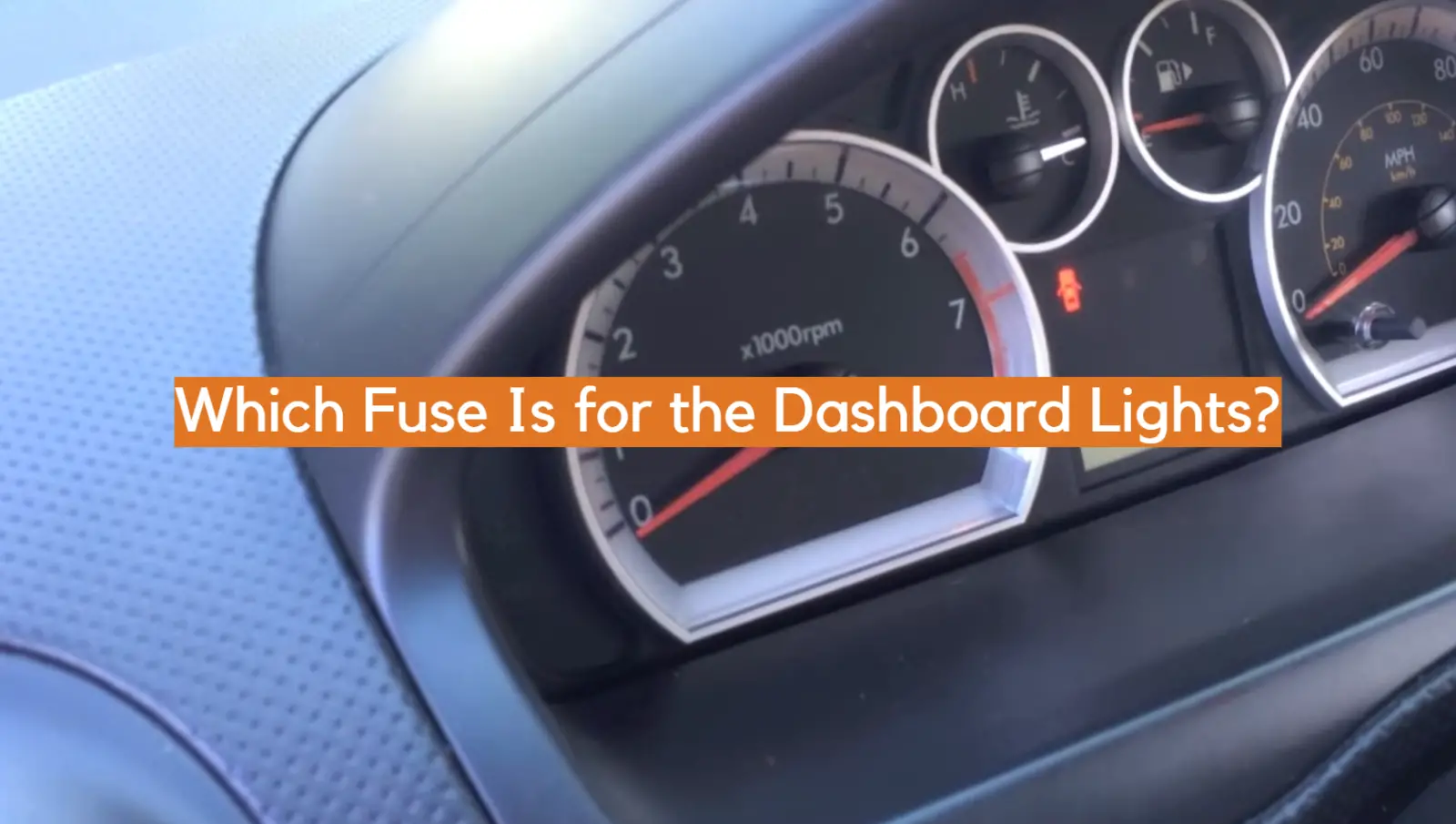







Leave a Reply